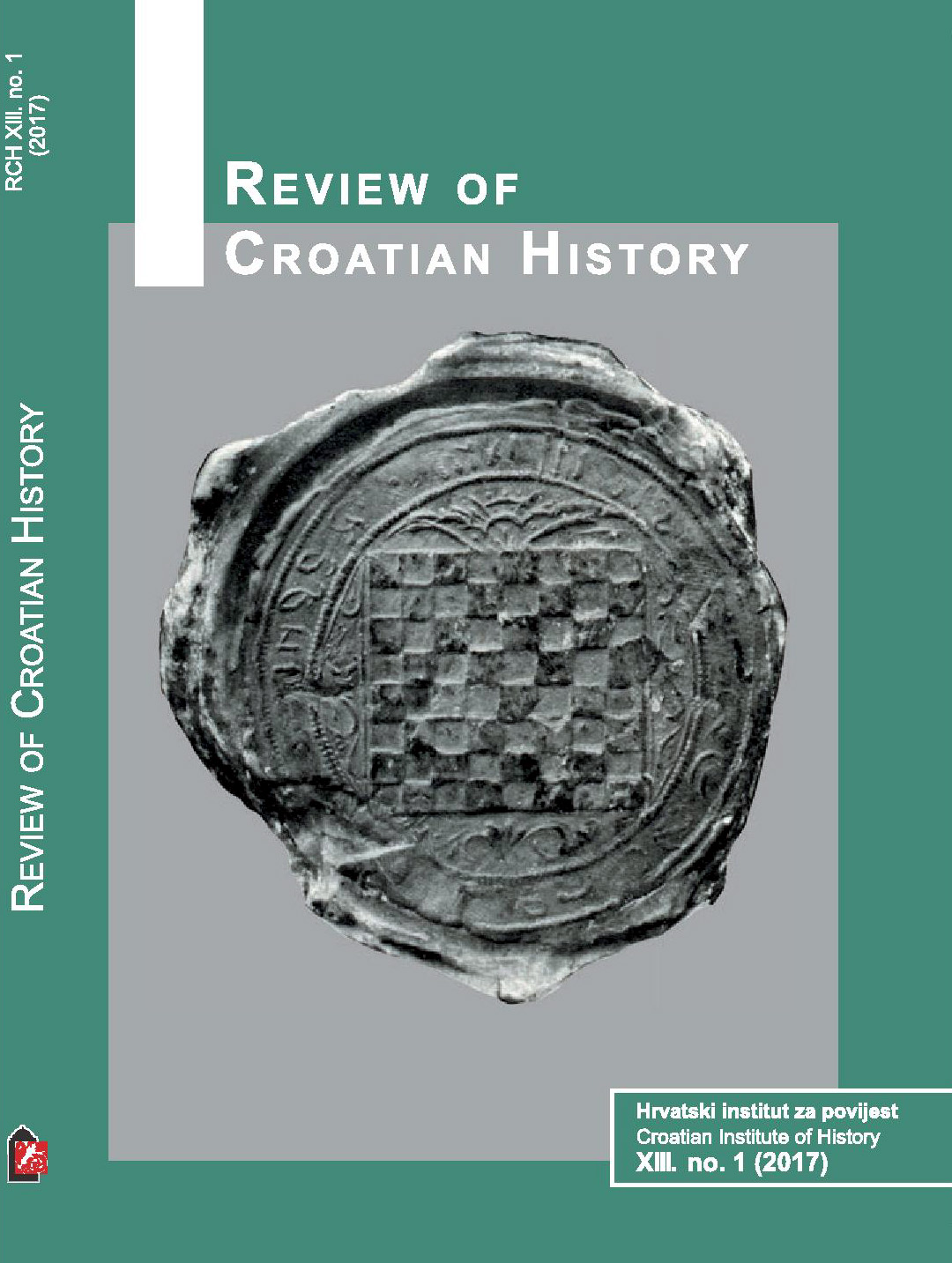SULLA SCIA DELLE PRIME TESTIMONIANZE DELLE MIGRAZIONI CROATE A VENEZIA (DALL’XI ALL’INIZIO DEL XV SECOLO
On the Earliest Evidence of Croatian Migrations to Venice (11th – Early 15th Centuries)
Author(s): Lovorka ČoralićSubject(s): 6th to 12th Centuries, 13th to 14th Centuries, 15th Century, Migration Studies
Published by: Hrvatski institut za povijest
Keywords: Venice; Venetian Republic; Eastern Adriatic; Croatian trans-Adriatic migrations;
Summary/Abstract: This paper primarily focuses on the Croatian-Venetian relations during the Middle Ages, more precisely until the beginning of the 15th century. It is based on the present historiographical knowledge and the original archival materials (both published and unpublished), especially those preserved at the Archivio di Stato di Venezia. The first part briefly presents the general political circumstances that influenced the Croatian-Venetian relations in the said period (military conflicts over navigation rights in the Eastern Adriatic, alternation of Croatian-Hungarian and Venetian rule over the area, Zadar’s anti-Venetian uprising, the reign of Louis I of Anjou, and other political factors). The central part of the text focuses on trans-Adriatic migrations and the Croatian presence in Venice from the 11th century until the very beginning of the 15th, with regard to the exact origins of Croatian migrants to Venice, their professions, economic activity and success, places of residence, and integration in the new setting. Along with various other examples, special attention is paid to the life and activity of Hrvat Dobromir, a former slave who became a successful Venetian entrepreneur (12th century). Another case study is the last will of Sergio Turturosi, a priest from Bar, written in the late 14th century. The final part of the study indicates the earliest Croatian contributions to Venetian culture, such as the activity of Croatian artists, primarily those linked to glass production on the island of Murano. The conclusion is that the Croatian migrations to Venice before the 15th century were, on the whole, individual. It was only the 15th century that marked the turning point, after which Croats would become a significant minority in Venice and gain social visibility as a recognizable and esteemed ethnic group in the lagoon city.
Journal: Review of Croatian History
- Issue Year: XIII/2017
- Issue No: 1
- Page Range: 7-27
- Page Count: 21
- Language: Italian

